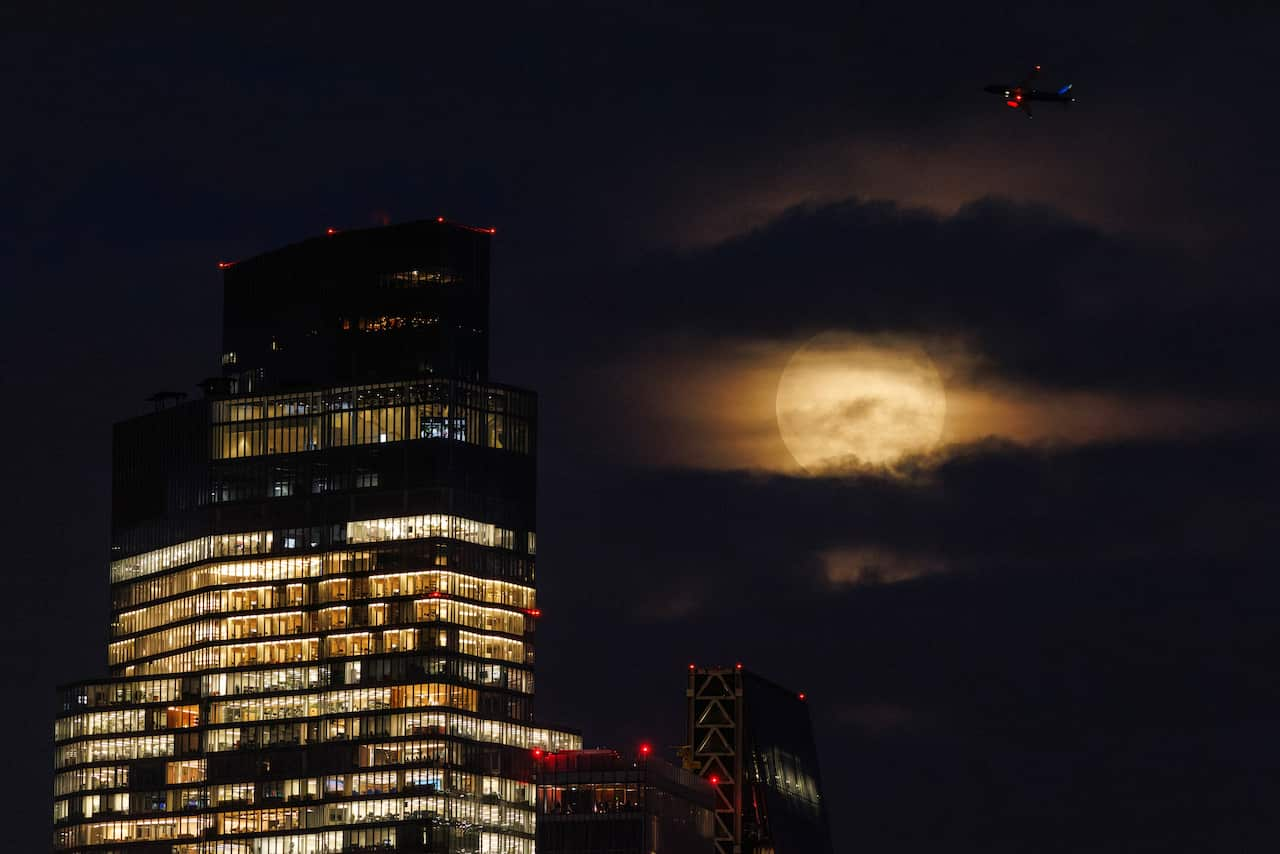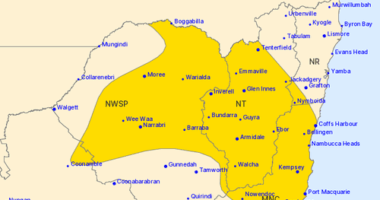Share this @internewscast.com
If you missed the harvest moon, don’t worry; more supermoons are expected before the year concludes.
What is a supermoon?
The moon’s nearest point to Earth is known as perigee. During its 27-day orbit around Earth, the moon reaches both its perigee, approximately 363,000 km away, and its farthest point — or apogee — roughly 405,500 km from Earth.
“Due to the Earth’s orbit not shifting much between months, supermoons can occur consecutively. If there’s a supermoon one month, it’s likely the adjacent months will also feature supermoons because their relative positioning doesn’t drastically change,” Batten remarked.
“Tides tend to be stronger during a full moon and even more so during a supermoon, leading to potentially larger king tides given the right conditions.”
Wait, what is a full moon again?
That’s because the sun’s light reflects off the moon back onto the Earth.

This week’s harvest moon, as seen from London. Source: Getty / Dan Kitwood
The opposite of a full moon in the lunar cycle is what’s known as a new moon.
“Aligning the moon on the same side of Earth as the sun results in a ‘new moon’, making it very dark as the sun, moon, and Earth line up,” Batten explained.
‘No-one talks about micromoons’
Conversely, a ‘micromoon’ occurs when the moon is at its greatest distance from Earth on its elliptical path, appearing much smaller.















